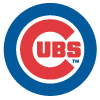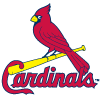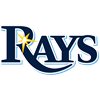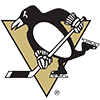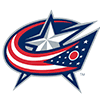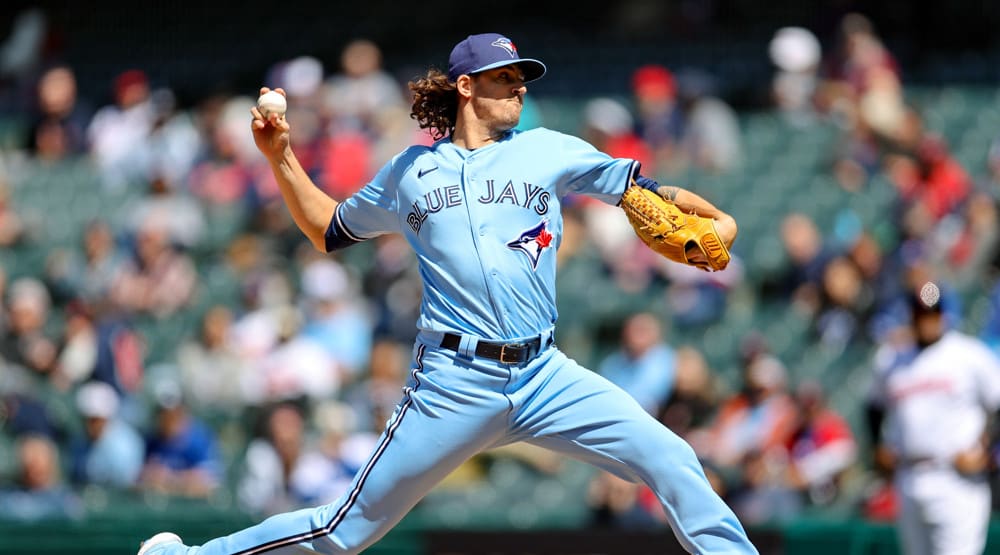Now that June has turned to July, we can say the first half is over and it's time to start looking for that arm that will get it all together and shine the rest of the season. July and August are the dog days to some, and a time to get hot to others. Those are the ones we are looking for, the pitchers who may have disappointed in the early months, or maybe they just made themselves more or less invisible with ordinary numbers. Hopefully we can find a couple of pitchers poised to make a splash in the very near future. Let's look at a few names that could shine in the second half.
Check to see if any of these guys are available in your league.
Ian Kennedy (San Diego) - There are a lot of things to like about Kennedy this season. His fastball velocity is up a couple ticks, his walk rate (2.30) has declined and is now in line with his most successful seasons, while he is striking out hitters at the highest rate of his career (9.55). And, maybe the best part of that is none of those factors have anything to do with his home park of Petco Field in San Diego. Kennedy has never been a dominating pitcher and he still isn't, even with the added jump on his fastball. He is a command pitcher who depends on location and a very aggressive "plan" for attacking each hitter. He's 6-foot-9 with
Now that June has turned to July, we can say the first half is over and it's time to start looking for that arm that will get it all together and shine the rest of the season. July and August are the dog days to some, and a time to get hot to others. Those are the ones we are looking for, the pitchers who may have disappointed in the early months, or maybe they just made themselves more or less invisible with ordinary numbers. Hopefully we can find a couple of pitchers poised to make a splash in the very near future. Let's look at a few names that could shine in the second half.
Check to see if any of these guys are available in your league.
Ian Kennedy (San Diego) - There are a lot of things to like about Kennedy this season. His fastball velocity is up a couple ticks, his walk rate (2.30) has declined and is now in line with his most successful seasons, while he is striking out hitters at the highest rate of his career (9.55). And, maybe the best part of that is none of those factors have anything to do with his home park of Petco Field in San Diego. Kennedy has never been a dominating pitcher and he still isn't, even with the added jump on his fastball. He is a command pitcher who depends on location and a very aggressive "plan" for attacking each hitter. He's 6-foot-9 with a 3.87 ERA and those numbers include a rather shaky June. He is pitching up a bit more, which is contributing to the strikeouts, but he has to be careful up there. His 91.7 mph fastball isn't going to blow people away if he leaves it up and in the middle of the plate. His FIP (2.97) and his BABIP (.338) both suggest better days ahead. Unfortunately, the Padres offense will probably limit the number of wins he can collect, but he could be a solid contributor in WHIP and ERA with a healthy boost in strikeouts. I'll take that.
R.A. Dickey (Toronto) - When Dickey came to Toronto following the 2012 season, I don't think many analysts expected him to conjure up numbers to match his final season with the Mets (20-6, 2.73 ERA, 1.05 WHIP). The Rogers Centre just isn't made for pitchers, and his groundball rate softened making home runs even more concerning. However, interestingly, it's not the Rogers Centre that is tarnishing his peripherals. He is actually pitching fairly well at home despite the home runs, but his road starts have been horrendous. Last season he served up 35 long balls and is on pace for only slightly fewer this year, but in watching a few of his innings, he doesn't appear to be getting hit quite as hard and his groundball rate has come back up, albeit slightly. Knuckleballs are difficult to hit - they can be like trying to catch a housefly with chopsticks, just ask the catcher when the pitch is on. It can also be difficult to throw strikes since you don't know where it's going, and that has been a big problem for Dickey this year. More walks, means more base runners, and when followed by a home run, more bad news. And, all of that comes with being forced to use a harmless fastball (82.2 mph) too often because he finds himself behind in too many counts. Dickey is a veteran, he's been knuckling for a lot of years, and the Blue Jays are a better team. I have a hunch.
Justin Verlander (Detroit) - Everything suggests Verlander is a veteran power pitcher in transition. He's still relatively young at age 31 and is well on his way to his eighth consecutive season throwing 200 or more innings. His free and easy motion contributed to his workhorse status, and you would think it might delay the inevitable. If they stay in the game long enough, every power pitcher loses some of that power. It becomes the end of the road for some, while others adjust to life without the overpowering heat and become more finesse oriented. For some it is a fairly easy and quick transition, while it can be a serious challenge for others. I have hesitated to list Verlander in the transition category, and I still find it hard to do watching him throw, but the fact is his fastball has lost velocity four consecutive years from a high of 95.6 mph in 2009 to its current 92.6 mph. It's still potent, but three full ticks is a big decline. It began last season, and has been even more pronounced so far this year. Verlander can't reach back like he once did and blow a key hitter away. He has had to be much more refined with his command and that has lead to higher pitch counts and more walks, not to mention more hittable pitches. I'd still like to think this is a mechanics thing and the velocity will return, but the numbers say otherwise. Like most pitchers who came up through the Detroit system, Verlander started young, and while he has a pitching motion that should be less stressful than most, he has a lot of miles on that right arm. So how does that translate to the pitchers to watch list? I am frequently seeing positive signs that he is making the transition. He is a savvy competitor, and if he does adjust to having less firepower, he could be a mound monster again. He's probably both the highest risk and the highest upside potential on this list, but I'll take a chance.
Homer Bailey (Cincinnati) - He makes the list because he consistently pitches like an ace at least part of the season, and he hasn't really done that yet this year. He does it just to frustrate me. I watch him, I like what I see (a lot) and I predict great things for him. He promptly goes into a funk and turns his ERA into a number resembling the national debt. Last season he was exceptional for many of his starts - in fact he was downright dominating at times. He still had his ugly moments, but it looked like maybe they were becoming far less frequent. That meant a lot to look forward to in 2014. Not so much. The velocity is still there (94.1 mph), the walk rate is just slightly higher and the strikeout rate is just slightly lower, but a significantly higher percentage of his pitches are over the middle of the plate. The result is a 1.35 WHIP (his highest since 2010) and a 4.39 ERA (also the highest it's been in four years). Bailey is better than this - a lot better in fact. There's nothing to suggest he's hurt, and he certainly hasn't lost his ability to throw a baseball. He just continues to lose focus, but I think he'll find it for a stretch and he would be a good one to ride when he does.
And don't forget to check in on these arms:
Several others are right on the edge of making the above list. People don't always realize how good Jeff Samardzija has been, and it's possible the Cubs will deal him to a contender. Some people think Phil Hughes could fall back in the second half, and I think he could actually be a bit better. His extremely low walk rate is nice. I keep watching Matt Cain and I keep coming away wondering what's been wrong. It's mechanical. His control is off just enough. I have to believe that gets fixed. Finally, for a disabled list flyer, I really like Derek Holland, and if he comes back sharp he could be an impact pitcher down the stretch. They won't overwork him but still worth a shot.
Some Notable Rotation Ramblings:
• The above list could easily have included Jake Arrieta, except that he turned up the heat a few weeks before the calendar flipped to July. He has been nothing short of extraordinary with his only fault being some rather high pitch counts. I have been a fan of his for a long time, even as a Cub. He is blossoming.
•Taijuan Walker made his 2014 debut with Seattle, and while he didn't redefine the art of pitching as some perhaps expected, he did produce a solid outing and should be around for a long time. I don't think he is the type of pitcher who will dominate from day one, he'll have his struggles, but he is a blue chipper.
• Something I HATE to see organizations do? I call it yo-yoing - having a high-quality arm bounce between the majors and the minors. The Orioles are doing it with Kevin Gausman, and it's a shame. In my observations it seriously slows the pitcher's progression. I understand still having options etc, but come on.
•Marco Estrada is another who was considered for the pitchers to watch list. He allows home runs by the bushel basket full, but he limits base runners and has shown the ability to miss lots of bats. His velocity is down a bit, but that was never his calling card anyway. I want to take a chance on him.
• Case study: Garrett Richards. Looking for mound positives? This composure qualifies. Four batters into his last start he had walked two, allowed a mammoth home run, and trailed 3-0. He gathered himself and the rest of the outing went like this: 23 more outs, one hit, no runs, no walks, nine strikeouts, 8-4 win.
• I am being forced to patiently (OK, as patiently as I can be when the exciting kid arms are concerned) wait for the flock of talent that is close to MLB ready. I just read the Mets may hold Noah Syndergaard back until next year. Some minor shoulder soreness set him back a bit earlier this season.
Endgame Odyssey
A trade with possible endgame repercussions: The Pirates sent Jason Grilli to the Angels for Ernesto Frieri. Frieri likely stays behind Mark Melancon in the Pittsburgh food chain, but the Angels will almost assuredly give Grilli a shot. ... Ronald Belisario is out as the White Sox closer (not surprising), and Chicago is in spin-the-wheel mode. No one stands out as his successor, but I will guess Jacob Petricka and Javy Guerra get looks. ... Jake McGee picked up saves in back-to-back outings but isn't the official closer just yet. It's possible he is establishing himself as the guy until Grant Balfour is ready to reclaim the spot. ... I feel compelled to mention this again. If Kenley Jansen's owner is making him available at a discount, I would be jumping in with both feet. I expect a huge second half. ... After another blown save, the discussion in San Francisco regarding the status of Sergio Romo has him stepping aside, at least for awhile. Santiago Casilla would probably the early line favorite for upcoming saves but Jeremy Affeldt provides an interesting lefty alternative. ... In Oakland Sean Doolittle experienced some wobble in a couple of his recent outings but his track record prior to the hiccups should have purchased him a little leash.












